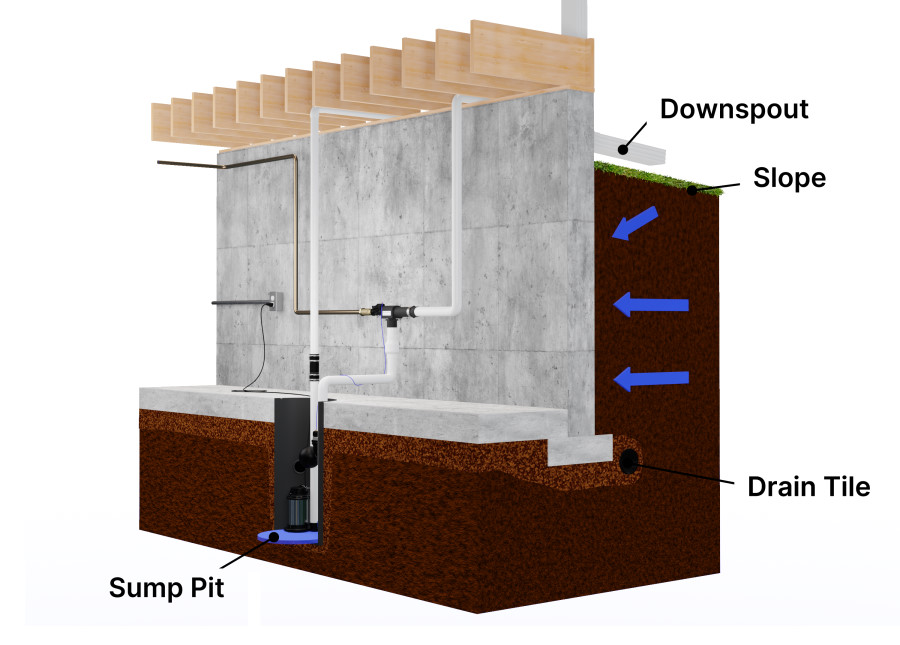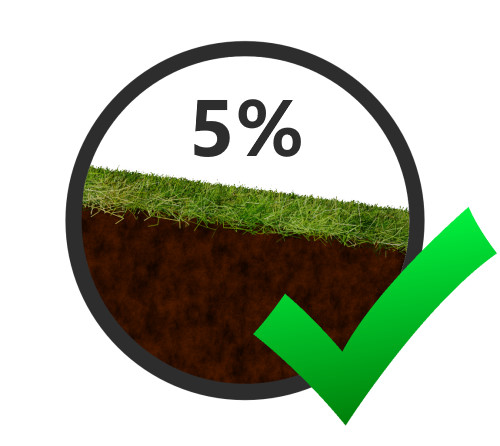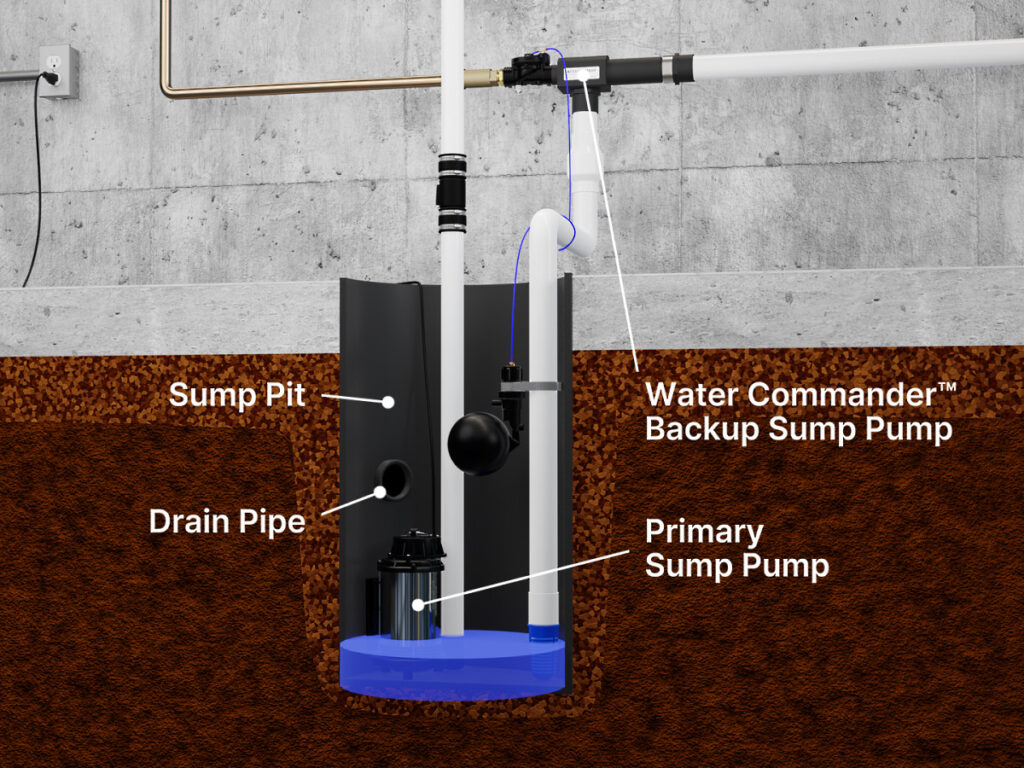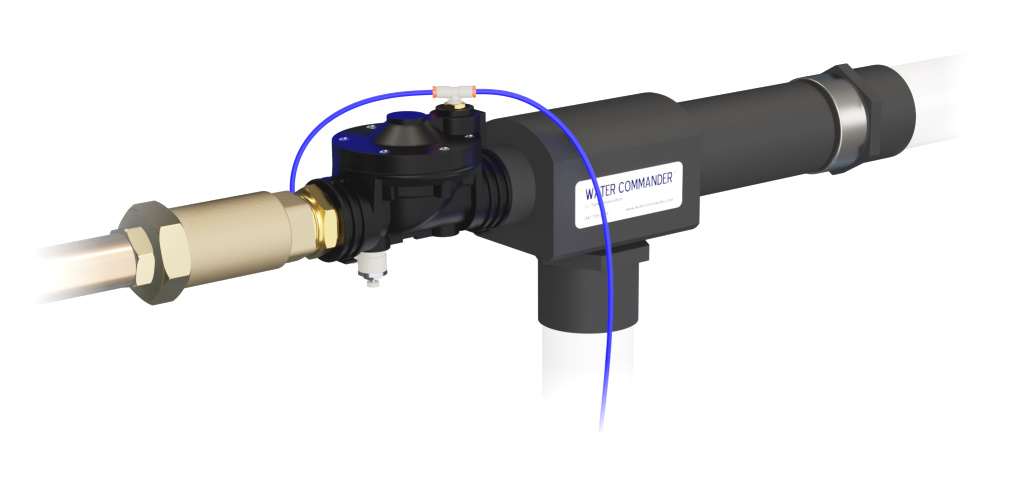Here are some important steps to protect your home’s basement against flooding during a heavy rainstorm.
Suffering from a flooded basement is exhausting and can cost you thousands of dollars. The property damage is extensive—ruined carpeting, drywall, water heaters, electronics, and the list goes on. And that doesn’t even include the cost to hire a flood remediation service, which can easily run more than $10,000.
Rather than waiting until after you have serious water damage, take proactive steps now to protect your home and bank account from basement flooding.
The best strategy to prevent a flooded basement includes the following steps:
- Diverting rain water away from your basement
- Channeling the water around the foundation into your sump pit
- Effectively pumping the sump water outside
Direct Rain Water Away From Your Basement
The most effective strategy to protect against basement flooding begins with minimizing the water accumulating around your foundation walls. You can do this by preventative measures such as ensuring a proper slope away from your home, functioning gutters and downspouts, and installing other drainage systems to mitigate water problem areas.
Slope Away From Your Home
Make sure your landscaping and concrete surfaces slope away from your foundation walls instead of towards it. (Ideally, this would be 6 inches within the first 10 feet or 5% grade). Over time the back-filled soil around your home can settle, creating low areas around the foundation where the rain water will pool. Fill in these low points with new soil to create a slope for the water to flow away from your home.
Gutters and Downspouts
Make sure the gutters are clear of debris with no blockages in the downspouts. If the downspouts empty out close to your home, you should extend them further away so the water doesn’t flow straight down along the foundation. This can be done above ground with a simple extension you can cheaply pick up at any hardware store. Another solution is to run PVC or corrugated piping underground, so the water empties further away.
Inspect all your downspouts and gutters during a good rain. Look for any leaks where water could be escaping and running down along the foundation walls instead of properly flowing through the extensions. Even a seemingly insignificant leak can turn into a big water problem during a heavy rainstorm.
French Drains & Catch Basins
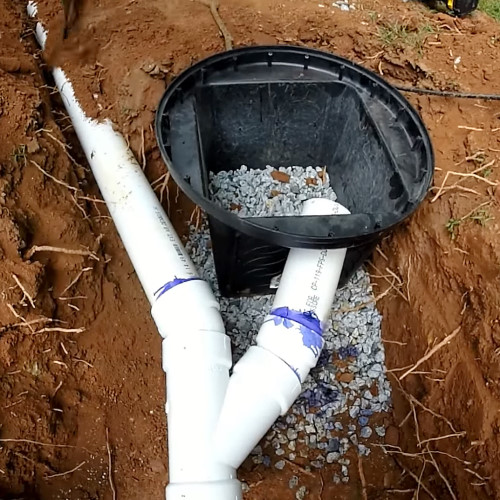
If you still have areas around your home that are collecting water, there are exterior drain systems you can install such as French drains or catch basins. A French drain can redirect water away from your foundation and reduce the hydrostatic pressure exerted by the ground water against the basement walls. This type of drain is simply a perforated pipe buried in gravel that collects rain water and then allows it to flow away from the home. A catch basin, another drainage solution, is a type of surface drain installed at a low point in your yard that “catches” the water and then redirects it away.
Channel Water Into Your Sump Pit
Once you have taken the proper steps to direct as much water away from your house, you’re dependent on your home’s drain tile and sump (assuming you have one). Most homes with basements in wet regions already have drain tile installed, which is simply drain pipes that channel water around the footing of your foundation walls into your basement sump pit. (See our article, “Sump Pits: Introductory Guide“.)
Since the drain tile and sump pit are typically installed when the home is first constructed, adding new drain tile to an existing home is a major and costly project. However, if you have consistent flooding problems, it can be worth it to protect your basement. For some crawlspaces and basements, a perforated sump pit (see example) that collects water without any drain tile feeding into it may be sufficient and a more economical solution.
Pump the Sump Water Outside Your Home
As water accumulates in the sump pit, the only thing preventing a flooded basement is an effective sump pump system. You should have a primary electric sump pump (see example), as well as a reliable backup sump pump for when the primary stops working (due to a power outage or mechanical failure).
The primary electric sump pump simply plugs into the electric outlet and will run as long as you have power. This pump is the main workhorse and is the first line of defense against flooding.
However, during a bad rainstorm it is common to lose power, which means this main pump won’t work until electricity is restored. This may be several hours or even multiple days. Therefore, you need a backup sump pump that is reliable even during a multi-day power outage, but is also powerful enough to pump water out of the sump pit during a heavy rainstorm.
For homes with municipal water, Water Commander™ is great backup sump pump solution. Unlike backup sump pumps that run on battery, Water Commander™ backup sump pumps run off of your municipal water pressure. It will keep running as long as needed, whether that’s hours, days, or even weeks. It also can pump at rates similar to or even faster than your electrical sump pump.
Watch the video below to see how Water Commander™ works:
For more information about the benefits of water-powered sump pumps, read our article, “Water-Powered vs Battery Backup Sump Pumps: Which is Best?”.
Additional Basement Flooding Prevention Tips
- If your downspout gets clogged frequently, consider installing larger downspouts to reduce this risk. Instead of the most common 2”x3” downspouts, consider 3”x4”. You could also install gutter shields to prevent leaves from accumulating in the gutters.
- Test both your primary sump pump and secondary backup sump pump several times a year to make sure they are functioning properly. Also, check that the sump pumps’ discharge pipes are not blocked by dirt or frozen water.
- Ensure all basement windows and doors are properly sealed and window wells are covered.
Other Resources
Below are some additional online resources to help prevent and resolve basement flooding:
Water Drainage Resources:
- How to Prevent Rain Water From Entering Your Basement (YouTube video)
- How to Size Gutters and Downspouts (This Old House)
- Final Grade Slopes Away from Foundation (pnnl.gov)
- DIY French Drain & Landscaping (YouTube video)
Sump Pit & Sump Pump Resources:
Looking for a quality backup sump pump?
Water Commander™ is the best backup sump pump system available on the market today. It’s non-electric, can out-pump your electric sump pump, and will run at full power for years to come.
It is more reliable than battery backups and is the perfect solution for homes with municipal water.
Top Posts
- Water-Powered vs Battery Backup Sump Pumps
- How Long Does a Backup Sump Pump Battery Last?
- Water-Powered Backup Sump Pumps: Ultimate Guide
- How Do Water-Powered Sump Pumps Work?
- My Battery Backup Sump Pump Alarm Won’t Stop Beeping (Fixes)
Recent Posts
- How To Measure Your Home’s Water Pressure
- Why Is My Sump Pump Not Working?
- How to Prevent Basement Flooding
- Battery Backup Sump Pump Troubleshooting Guide
- My Battery Backup Sump Pump Alarm Won’t Stop Beeping (Fixes)
Categories
Tag Cloud
Alarm Backup Sump Pump Batteries Basement Flooding Beeping Bernoulli Principle Best Sump Pump Check Valves Crawlspace Discharge Pipes Drain Tiles Ejector Jet Float Assembly Independent Discharge Municipal Water Perforated Sump Pits Power Outages Primary Sump Pump Failure Pros and Cons Pumping Charts Pumping Efficiency Pumping Rates Pump Life Span Pump Run Time Pump Testing Radon Gas Suction Pipe Sump Basin Sump Pump Motor Sump Pump Switch Troubleshooting Ultimate Guide Venturi Effect Water Drainage Systems Water Pressure Water Pressure Gauge Water Usage
